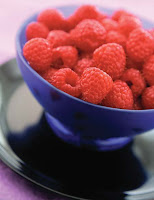In
our previous Nutrition and Health post, we discussed the challenges families face in making healthy choices for children’s diets. We live in a fast-paced society, and as a result, many of us look for convenient ways to prepare meals, which often include pre-packaged, processed and “fast foods”.
More schools are developing initiatives to promote healthy nutritional choices by establishing policies that everyone in the school community can embrace. The key to success is thoughtful preparation and effective communication so that faculty, students and parents are able to implement a clear, user-friendly program designed for success.
Nutrition and Health in the Montessori School: Planning and Parent Involvement
Parent Communication and Participation
Parents are the primary role models for their children, so parent education and participation is vital to the success of a healthy food program. As with any parent interaction, respectful dialogue includes listening; and parents often have great ideas to contribute. If you are planning to launch a program, consider holding a
family forum annually to introduce or reintroduce parents to the details of the program and its policies. Be sure to explain that this is an important part of an overall commitment to health and wellness in the Montessori school community, and feel free to include other aspects of a holistic approach that will complement a healthy food program in the school, such as physical activity and environmental education.
Emphasize the importance of parent support and participation as critical to the program’s success, and maintain a positive focus on the short- and long-term benefits of a healthy food program. Good health and well being are the cornerstones of developing strong, caring citizens of the future. And a healthy diet has a direct impact on student performance.
Careful preparation is also vital to the success of your school’s healthy food program. Give parents concrete initiatives and ideas that they can execute on a daily basis, with a minimal shift in their normal grocery shopping routine. Be prepared for flexibility to work within specific parameters that guide parents’ food choices, such as food allergies, “picky eaters”, or cultural diets. Remind parents that change may not happen overnight, but if you work together over time, you will have happier, healthier, and more alert children.
While organic foods would be the first choice, this is not always available for various reasons. Perhaps you live in an area where it is difficult to purchase organic food, or higher prices for organic food may be prohibitive for some families. Being sensitive to and respectful of this issue is always important. Keep your emphasis on awareness of and choices for nutritious foods.
Components of a Healthy Lunch
Lunch should consist of one serving of each per day:
- whole grains

- fruits and vegetables (preferably one of each)
- lean protein (less than 1 oz. on a child-sized sandwich!)
- calcium
- “Healthy meals in general should focus on fruits, vegetables and grains," says Mary Ellen Renna, MD, a board certified pediatrician, nutritionist and author of Growing Up Healthy the Next Generation Way. "We should think of meats and proteins more as a condiment. Kids really do get plenty of protein—and adults even more so."
Provide examples of each of the above categories so parents have a better idea of what to include in their child’s lunchbox. At the family forum, consider displaying several variations of pre-packed lunch boxes as examples for parents. It might even be fun to have samples for the parents to taste. For pre-printed menu ideas, scroll down to the bottom of the web page at
myhealthyschool.com .
A chart is a great way to illustrate healthy alternatives to common food choices (
http://kidshealth.org/parent/food/general/lunch.html):
| Instead of |
Consider |
| Higher-fat lunch meats |
Lower-fat deli meats, such as turkey |
| White bread |
Whole-grain breads (wheat, oat, multi-grain) |
| Mayonnaise |
Light mayonnaise or mustard |
| Fried chips and snacks |
Baked chips, air-popped popcorn, trail mix, veggies and a healthy dip |
| Fruit in syrup |
Fruit in natural juices or fresh fruit |
| Cookies and snack cakes |
Trail mix, yogurt, or homemade baked goods such as oatmeal cookies or fruit muffins |
| Fruit drinks and soda |
Milk, water, or 100% fruit juice |
Montessori parents who see and believe that they are advocates for their children’s health in partnership with the Montessori school are critical to your program’s success. Bon appétit!
Addtional Resources:
- Scholsser, Eric. Fast Food Nation. Penguin Books. (2002)
As much as possible, NAMC’s web blog reflects the Montessori curriculum as provided in its teacher training programs. We realize and respect that Montessori schools are unique and may vary their schedules and offerings in accordance with the needs of their individual communities. We hope that our readers will find our articles useful and inspiring as a contribution to the global Montessori community.
© North American Montessori Center - originally posted in its entirety at Montessori Teacher Training on Monday, April 27, 2009.



I am SO happy to see this article. The pitiful state of school lunch programs makes me really sad. How are children supposed to learn when they're living on junk food? It doesn't have to be complicated to follow healthy eating guidelines in a school lunchroom.
ReplyDeleteDear Healthy Meal Plans,
ReplyDeleteThank you for your post. While many school lunch programs are still struggling to provide healthy meals, often proper modeling of nutritious lunches and discussions on the importance of nutrition can lead children to make healthier choices. Children benefit most from positive role models.